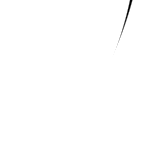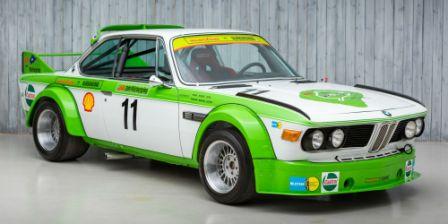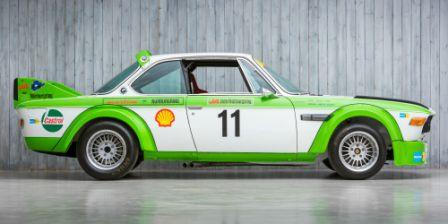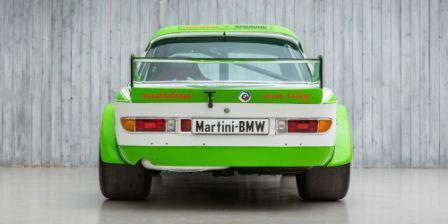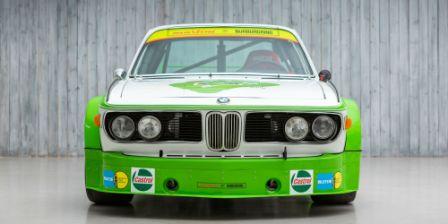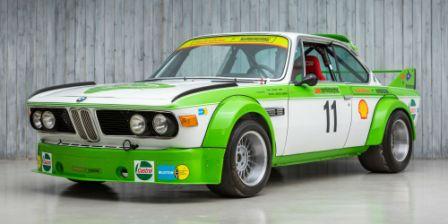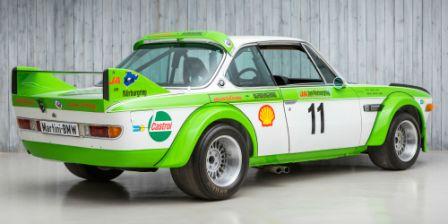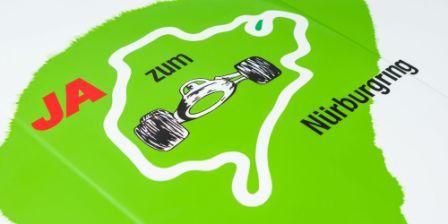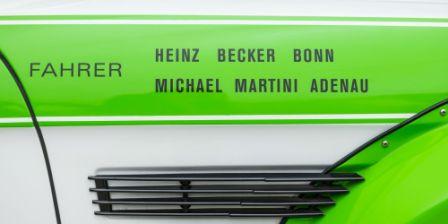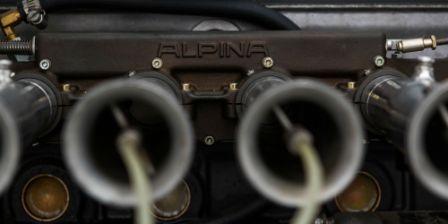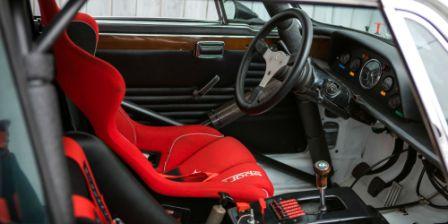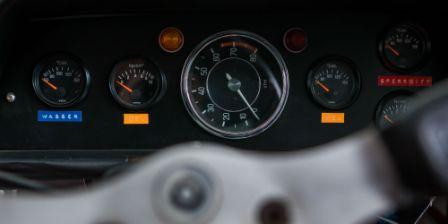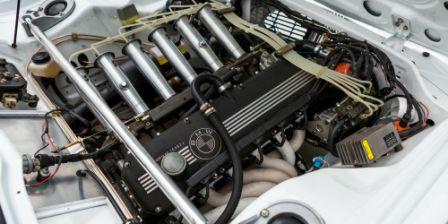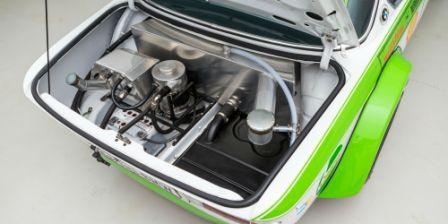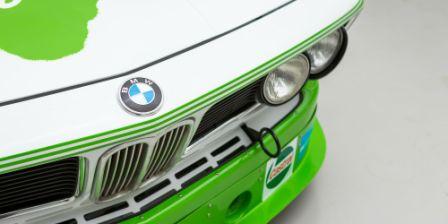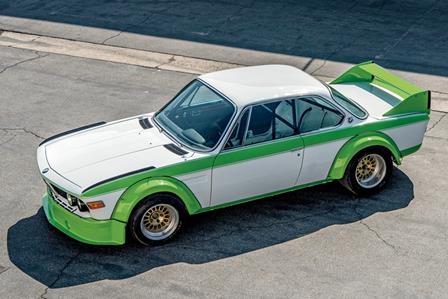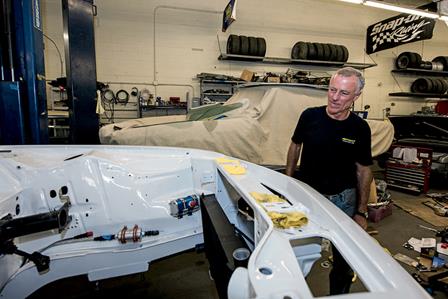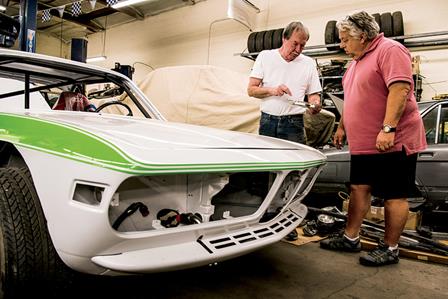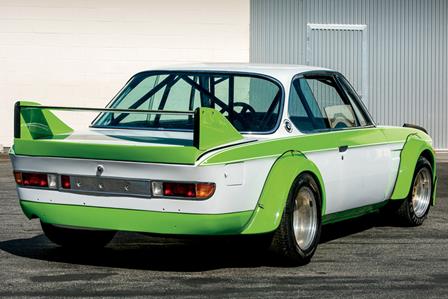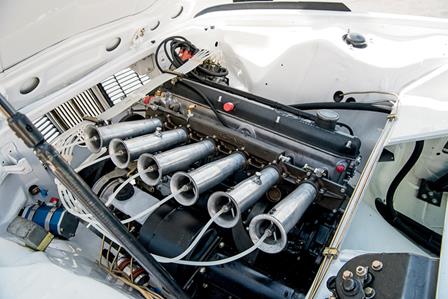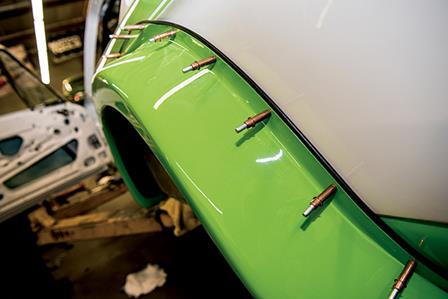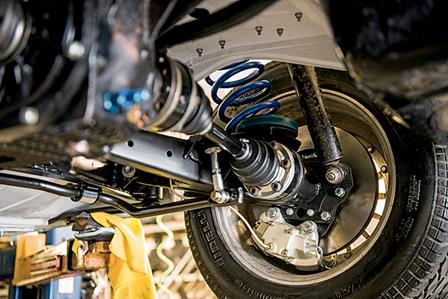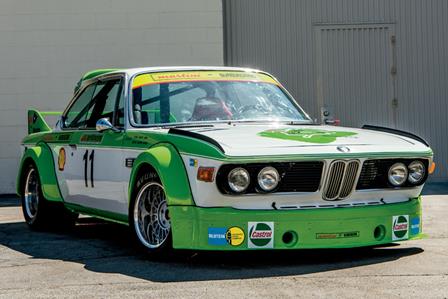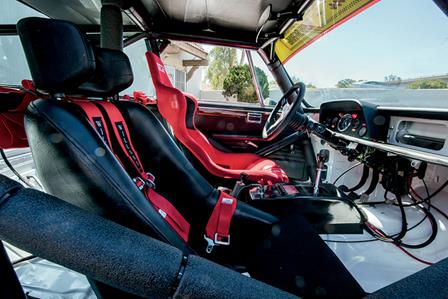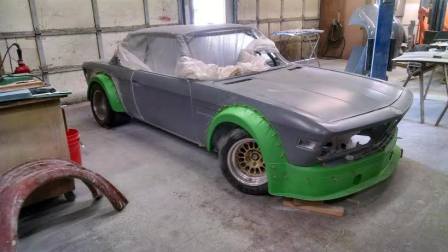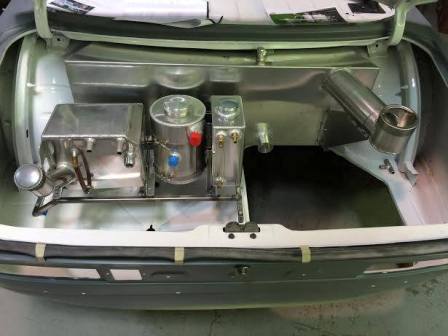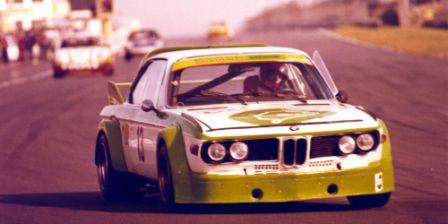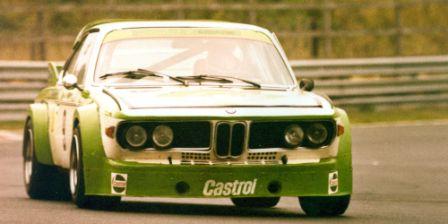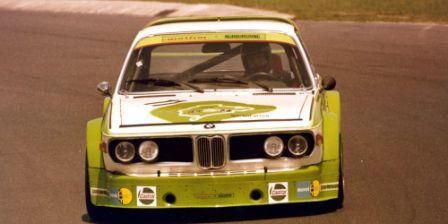

| site search byfreefind | |||
|
|||
2019
Before 2019
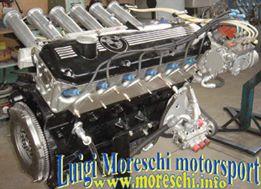
na 3.5 with Alpina slide engine
Below 2016
Older
Willi Martini was one of the first factory racing drivers for BMW and was very close to the Quandt family. The original 2800 CS BMW [confirmed by Ron Perry] back in 197 was crashed beyond repair, so BMW gave him another shell without a serial number so he could continue racing. That car is the present one, but was gutted when the rules changed in favor of saloon cars. At that point, BMW gave Willi an e12 chassis and he transferred all the drivetrain over and this car was cast aside. At some point, the car was turned into a Group 5 car for the street, but I don't think it was ever completed. We have had to reverse engineer the entire car to bring it back to it's former glory and we will have the closest version of what "was" than any other period restoration out there now. I tell everyone that I paid $75k for the Wagenpass and got the car for free! It will truly be a masterpiece. Art Simonds whom was one of the first employees at BMW Motorsport and developed all of the factory CSL efforts is our project manager and you couldn't have a better company working on the car.
Though not as celebrated as he deserves to be, Willi Martini was a seminal figure in BMW’s history and was instrumental in its involvement with motor sport. Established in 1958 at the Nürburgring, his operations came to comprise a BMW dealership, a service facility, a race team, race car preparation facilities, a wing for the design and development of “tuning” parts for customers and even production operations for bespoke custom BMW-based race cars, ranging from 700-derived touring cars to sports prototypes to Formula 2. He was a pioneer in many technologies, including the use of fiberglass for race car bodywork. An avid driver as well as engineer, he counted among his friends and customers many motorsport legends like Fangio and Von Trips.
It would be no exaggeration to say that Renngemeinschaft Martini *was* the racing arm of BMW, and for many years. Though later eclipsed by the likes of Alpina, Schnitzer, and of course the works team when BMW at last created it, Martini continued to field BMW race cars into the ‘80s. His son Michael Martini raced some of those, and when BMW bought out the Martini business Michael joined as test driver (and, incidentally, first “Ring Taxi” pilot).
When BMW’s “Neue Klasse” sedans evolved into the E9 2800 and 3.0 family Martini naturally saw a new opportunity for racing, particularly with the growing manufacturer interest in motorsports as a marketing tool. Martini’s opening effort was to take Willi’s handsome new silver 3.0 CSL street car and prepare it to Group 1 specification, thereby adding it to the team’s stable of Ring veterans (being based at one of the world’s most legendary race tracks has its perks- in fact Martini seldom took their cars to race anywhere else, and who could blame them!). A proper Group 2 car followed, in by-now trademark Martini colors: Alpine White with green trim, no doubt inspired by the “Green Hell” of the Nordschleife. In case this point was not sufficiently clear the color scheme was supplemented by prominent graphics promoting the Nürburgring, including a very large splash of green on the bonnet with a map of the track on it, encircling a frontal sketch of a Formula car- an homage, presumably, to Martini’s earlier Formula 2 efforts, or to advertise their nascent involvement in Formula Super Vee.
For 1979, the final year of 3.0 CSL homologation, the team’s workhorse CSL was retired in favor of a fresh car, VIN “BMW 001/79”. As that number suggests, it was built from a factory-supplied shell rather than a production chassis. (Similarly built from shells, the well known Luigi "UFO" cars had VINs of "77-003" and "77-004”.) As a typical privateer car and continuing the practices of its predecessor, 001/79 employed by-now standard CSL race bits. These included parts from Alpina such as coilover front struts, a slide throttle intake, and dry sump oiling (this last having been re-allowed by a 1976 rules change intended to benefit Jaguar, whose motors had an alarming tendency to scatter due to lubrication loss). No werks-type exotica- center lock hubs and the like- were used, and Martini fashioned their own fiberglass components. A full season of events followed, all at the Ring, under the auspices of ADAC, DRM, and, for the annual July "Großer Preis der Tourenwagen”, the ETCC. Results were excellent in nearly all of them (including a fine 7th overall and 4th in Division 5 in the ETCC race), but the main priority for the team was always the Valvoline-Langstreckenpokal (“Long Distance Cup”) endurance championship.
As the season drew to a close Martini found themselves in a tight race for this championship, and this was to prove the undoing of 001/79- though, paradoxically, also its salvation. Here is an excerpt from a letter from Michael Martini many years later (2003), explaining the car’s history to a Herr Steinbrink who had bought the car from Willi.
In the last race of 1979 we swapped our 3.0 CSL coupe with a 2002 of the team of Hans Weisgerber and Richard Bremekamp to keep our chances intact for a title in the Long Distance Cup. It was a question of extra points based on the number of participants. Since the class of 2002's had a lot more starters, we hoped to make up the missing points this way. Unfortunately it did not work. To make matters worse our coupe was involved in an accident in the South Hairpin Curve on the first lap and had to abandon the race. Since the homologation for the CSL coupe expired as of 31.12.1979 we had to think about what we could do with the damaged vehicle. There was at the time discussion of allowing vehicles with an expired homologation to continue to race in the Long Distance Cup in a new class under Group 5 rules. That meant for us that we could use wider wheels and lighten the car. The disadvantage was, that we couldn’t race anymore with the old Group 2 bodywork. Since we had to repair the collision damage anyway we saw this as an opportunity to continue with the coupe and and install the Group 5 bodywork. In the midst of this work, we got the news that we could not participate in the endurance championship with this vehicle after all. We stopped working on the coupe after mounting the Group 5 fenders. This body was stored until you bought it from my father. The remaining parts were used to build up a 535i Group 2, since both vehicles had very many identical parts. But with that car we were never able to build on the success of our coupe.
A somewhat lurid sequence of photos documents this first-lap denouement, though happily the damage was not extensive. Another photo shows the stripped shell, repairs effected, sporting new Group 5 bodywork. It was in this state that the car languished, forgotten, in a corner of the Martini shop until it was sold to Steinbrink- who proceeded to slap street car running gear in, paint it in faux Motorsport livery, and, one assumes, parade it in front of his friends! (But given the state of the car when it turned up later in Amsterdam, it is inconceivable that it could have been road registered.) Notwithstanding the mild embarrassment of the circumstances, the car thus managed to escape the much worse fates of many of its contemporaries, such as the Emilio car, which was converted to hill climb competition and badly wrecked.
The slow resuscitation of 001/79 began over ten years ago, when a noted US collector bought the car. Intending to restore it, his attentions were however almost immediately diverted by the acquisition of another car. The Martini CSL was again relegated to storage, until I bought it in 2012. My enthusiasm for the project perhaps clouded my judgment, for despite being in very sound condition the car needed absolutely everything! To turn the shell back into a race car, at least on the terms to which I was committed, using only vintage and period correct parts and with painstaking attention to its history, was an undertaking I frankly underestimated. But equally frankly it has been a lot of fun! In brief, I spent 3 years learning CSL and European touring car racing history, meeting experts, poring over a rich but uncatalogued archive of Martini photos, and scouring Europe for parts. I sourced Alpina parts in the UK, along with the gearbox and rear axle from the aforementioned Emilio car, bodywork in Germany, a complete M52 race motor from a garage in Italy, and other bits and pieces from all over. I have virtually memorized FIA Homologation Document 1648. I have personally examined or consulted photos of nearly every extant Group 2 CSL. And I have made a number of new friends, a few of whom deserve mention.
My first lucky break came when I wrote to the publishers of “Rennsportlegende Willi Martini” who kindly put me in touch with its author Wolfgang Thierack. Wolfgang has been enormously helpful, providing me with copies of all of his many photos of the Martini CSLs and critiquing my detective work as I tried to sort out cars and events. Wolfgang also introduced me to Michael Martini and his brother Olli, who have graciously and enthusiastically supported the project and endured my incessant questions. I was lucky too to meet Patrick Mortier, owner for some time of the Martini 535 mentioned earlier. This was a valuable connection, for many of the parts on that car (which is still actively campaigned in historic races in Europe) came originally from 001/79. Alex Elliott, who now looks after the 535 as well as many of the most significant CSLs, has provided many rare parts and helpful guidance. And no less valuable has been my association with Ron Perry, CSL expert and restorer par excellence, and Art Simonds, veteran of the earliest days of the werks Motorsport team who had a hand in building the all-conquering factory cars under Jochen Neerpasch.
Though far from done, the restoration of 001/79 is well underway. The car was taken to bare metal and documented- a very interesting process which turned up lots of evidence in support of its history, and helped clarify some of the puzzles I had encountered when researching it. The Group 5 bodywork was removed and preserved, and new front fenders welded in to carry the Group 2 flares. In another bit of serendipity, I was able to obtain flares and and a front air dam made from molds taken from the original parts many years ago. The motor is at the engine builder’s, and a period Sachs racing clutch is on its way from Germany- surely the last available anywhere, to judge from the difficulty I had in finding it! Accompanying the clutch will be a lovely set of original, sand-formed Alpina headers. Period Lockheed front brake calipers (as used then in Formula 1) are being rebuilt, together with correct Ate rears. I have drawn up plans to reproduce the large, endurance racing fuel tank but with a modern fuel cell hidden inside. The rest of the boot will be filled with the car’s original dry sump engine oil tank, and a tank for the rear axle oil which will be circulated by a period pump driven off the axle shaft.
The car has been accepted to the Monterey Motorsports Reunion this August, which is fitting as the event will celebrate BMW as the featured marque. Michael and Olli are planning to attend, and I am trying to persuade Michael to race the car!
History second section:
With BMW’s six-cylinder CSL taking so much success in European Touring Car racing, Nurburgring local, BMW dealer and racing specialist Willi Martini was not one to be left out! Willi Martini was a seminal figure in BM W’s history and was instrumental in its involvement with motor sport. Established in 1958 at the Nürburgring, his operations came to comprise a BMW dealership, a service facility, a race team, race car preparation facilities, a wing for the design and development of ‘tuning’ parts for customers and even production operations for bespoke custom BMW-based race cars, ranging from 700-derived touring cars to sports prototypes to Formula 2. He was a pioneer in many technologies, including the use of fibre glass for racing car bodywork. An avid driver as well as engineer, he counted among his friends and customers many motorsport legends like Fangio and Von Trips.
In his workshop base at the Nurburgring, around 1976, he built a CSL coupe for Group 2 using a body shell which had been provided to him by the factory. The 12-valve six-cylinder engine was initially of 3.0-litre capacity, tuned with their own skills using three double choke Weber carburettors.
The Martini ‘mannschaft’ reinforced the BMW supplied shell around suspension pick up points, and fitted it with the necessary safety equipment that the rules required. They made the Group 2 wheel arches to Alpina specification to cover the wide, aluminium rimmed Alpina split-rim wheels. When completed, the Martini CSL weighed just 1062kg and was capable of 168 mph on the long straight of the Nurburgring Nordschleife.
Willi Martini had his eldest son Michael race the CSL with Heinz Becker typically in the Endurance Cup and German Touring Car Championship, with Hannes Schneid occasionally driving too. It wasn’t long before they changed engine specification, running with a 3.2-litre six-cylinder on slide throttle injection.
The initial Martini CSL suffered an accident during 1978, and was rebuilt for 1979 on a new body shell, number 001/79, this car. It featured the same 3.2-litre injected engine, gearbox and running as its predecessor, and was completed in time for the beginning of the 1979 season. Painted in the distinctive Alpine white and bright green livery with Nurburgring track murals, the CSL was inspected by German motor racing authority, the ONS, on the 5th April 1979 and granted it’s Wagenpass which features colour pictures of the Group 2 challenger.
For 1979, the Martini team focused on the long distance championship, the Valvoline Langstreckenpokal. The newly rebuilt Martini CSL made its race debut just two days after the ONS inspection, in the Nurburgring 4 Hour race, titled the ADAC Ahr Rotwein Trophy. Sporting number 11, the CSL was driven by Heinz Becker in the 25 lap race but he was not classified.
At the following round, the 333 mile long Sieglarer ADAC 333 Meilen Rennen on the 5th May, the Martini CSL was evidently not ready for the race as Becker and Martini instead drove a near standard CSL Coupe. Two weeks later it was however, with Becker and Martini again teaming up. In the 6 hour long International ADAC Rundstrecken Trophy, the Martini CSL carried number 11 once more and performed faultlessly to claim victory in the over 2-litre Group 2 class.
A sprint race on the short circuit followed the 333 mile main event, where Becker took another win in the over 2-litre Group 2 class, this time with the CSL wearing number 25. The Martini CSL was entered for the Nurburgring 1000km round of the World Sportscar Championship on the 3rd June with Becker and Martini due to drive the car, sporting number 51. The race was recorded in the CSL’s Wagenpass log but it did not complete the event. A week later, on the 9th June, Becker and Martini raced the CSL in the ADAC Bilstein Cup, a 600km race. With number 10, the pairing took another over 2 litre class win.
On the 7th July, the Martini CSL did the Großer Preis de Tourenwagen Nurburgring, a round of the European Touring Car Championship. Becker and Martini shared with Adolf Engel using race number 4. The trio qualified the CSL in 5th amongst some very distinguished competition, and finished the race in 7th. On the 15th July, Becker raced the CSL in a sprint race on the short Nurburgring circuit with number 147, but the results aren’t recorded.
Michael Martini drove the car in another sprint race, the ADAC Nurburgring Trophy on the 22nd July with number 21, with the results also not being recorded. Engel drove with them again on the 28th July for a 4 Hour Valvoline Cup race, with number 9 although the result was not recorded.
Becker and Martini returned to dual driving for the ADAC Reinoldusfahrt on the 4th August at the Nurburgring with race number 11. They flew to yet another over 2-litre Group 2 win. On the 18th August they competed in the RCM Grenzland-Rennen with Engel joining them once more. With number 9, they won again!
On the 1st September, the trio competed in the CSL in the ADAC Barbarossa Preis 4.5 hour race, where they proceeded to win the over 2-litre Group 2 class. On the 20th October, they raced in the DMV 250 Meilen-Rennen with number 13. The CSL racked up yet another win in over 2-litre Group 2. Becker drove solo in the ADAC RBG Rundstrecken-Rennen sprint race on the 21st October, winning again in the CSL.
The final DMV round was the 4 hour long Münsterland Pokal on the 27th October. With Becker and Martini having scored so many wins with the CSL in 1979, they competed at the final round in a 2002 with the hope it would yield more points thanks to the high number of class entries, and help them to the title. Having swapped cars with the 2002’s regular drivers Hans Weisgerber and Richard Bremekamp, the CSL would be driven by them instead. The CSL did not make it round the first lap however, when it was tagged on a rear wheel and spun out, breaking a wheel arch and rim.
The homologation for the BMW CSL model expired with the close of 1979, and Willi Martini began upgrading the CSL into Group 5 specification in order to continue running the car. However, the Valvoline Trophy organisers changed the rules, resulting in Group 5 cars no longer being eligible.
Willi Martini instead built a BMW 535i Group 2, using a number of the parts from his CSL. Later, Martini’s race team and dealership business would be bought out by BMW and his son Michael would become the first ‘Ring Taxi’ driver. The by now Group 5 wheel arched CSL was put into storage before Martini sold it to Helmut Steinbrink in Voerde, Germany.
From Steinbrink it was bought by Jimmy Baker via a Dutch classic car dealership, and Baker exported the CSL to the United States. Based in Alabama, Baker was a longtime BMW CSL enthusiast who found the car and added it to his collection in 2004. A letter from Michael Martini to Steinbrink in 2003 confirmed both the background of the Martini CSL and its clear ownership history.
The CSL remained in Baker’s care until in 2012, when the current owner bought it from him. When it arrived in Ron Perry’s workshop, the CSL was in works BMW colours with the Group 5 arches still present and set up for road use. The current owner then undertook the restoration of the Martini CSL with the help of Ron, a man very familiar with CSLs having previously restored one for Bobby Rahal.
Over a period of several years, correct Group 2 parts were tracked down for use in restoring the Martini CSL. Period correct BMW12-valve engine parts were collected, coming in the form of an Ex – Jolly Club engine from Italy with correct Alpina slide throttle injection, and others coming from Alex Elliott in England. The engine was built to 3.2-litre, as it was run in period, with original block, head, injection and other parts, complemented by new parts from experts like Lester Owen where needed.
On completion the engine produced 340hp when run on a dyno. A period Getrag 4 speed gearbox with long 1st gear and close ratio 2nd, 3rd and 4th ratios was found, along with a correct Alpina diff complete with the oil cooler. A set of period correct Alpina Group 2 front and rear suspension was also sourced, followed by a pair of closed back, four pot Lockheed front brake callipers as were used in period.
The body shell was stripped and Group 5 bodywork removed. The shell bears all the evidence of its period racing history with Martini, from left rear wheel arch damage in its final race, to strengthened suspension points, roll cage mounts, and other racing tweeks. The project was aided further by Art Simonds, one of the first people to help in CSL development in period. Aside from providing invaluable insight, he was key in getting the Group 2 bodywork just right. A correct front spoiler was found, and Art reconstructed the period wheel arches for the restoration.
A new steel roll cage was made, replicated the original Matter aluminium cage as used by Martini in period, mounted to the original holes. A bag tank fuel cell was fitted inside a period outer, and the dry sump equipment was plumbed up inside the boot as it was in period. An original set of sand bent Alpina exhaust primaries were acquired, along with a period Sachs racing clutch. A 1970s Dymag label machine was found to round off the detail, with the gauges being authentically labelled in German.
The restoration was completed in time for the car to make its public debut at the 2016 Monterey Motorsports Reunion, where BMW was celebrated as the featured marque. FIA HTPs were applied for and obtained for the CSL, granted in 2016. In 2017, it returned to the Pebble Beach week, on show at Quail Lodge where the hugely impressive level of period detail could be appreciated away from a race circuit.
Today the Martini CSL is as restored in California, while here with us in England and with EU taxes paid. Lovingly rebuilt to its former glory by passionate owner and BMW experts alike, the Martini CSL is a car which is equally at home on the concours lawn as the race track. Accompanied by 2016 FIA HTPs and in date safety equipment, along with a history file containing the original Wagenpass, correspondence with Michael Martini and an extensive photographic record of the restoration; the CSL is a prime contender to compete in Peter Auto’s HTCC, the Tour Auto, Le Mans Classic and so much more.
Summary:
-
Chassis Number: 001/79
-
Built by BMW dealer and Nurburgring based racing specialist Willi Martini on a factory supplied shell in late 1978 to take on the Nurburgring in 1979.
-
Driven by his son Michael, Heinz Becker and occasionally Adolf Engel to a string of Group 2 victories on the Nurburging in 1979, including being entered for the World Sportscar Championship round and finishing 7th in the European Touring Car Championship round.
-
Bought by the current owner in 2012 having been partially converted to Group 5, by Martini. Restored back to period Martini glory with the help of BMW experts, utilising a large number of original components and featuring a staggering level of detail.
-
Accompanied by the original Martini Wagenpass, correspondence from Michael Martini, photo log of the restoration and 2016 FIA HTPs. The Martini CSL is a veteran of the Quail Lodge concours, was a key part of the 2016 BMW celebrations at Monterey Motorsports Reunion and will be equally at home on the circuits of Europe as an eligible entry for Peter Auto’s HTCC, the Tour Auto, Le Mans Classic and much more.
Transaction: 2019: for sale
Owner:
-
2012 -> 2020 ->: owner x
-
Willi Martini
Courtesie / Thank you / Credit:
https://williamianson.com/car/martini-bmw-3-0-csl-batmobile-group-2-for-sale/
Ron Perry
https://www.bimmer-mag.com/issues/143/articles/stirred-not-shaken?

